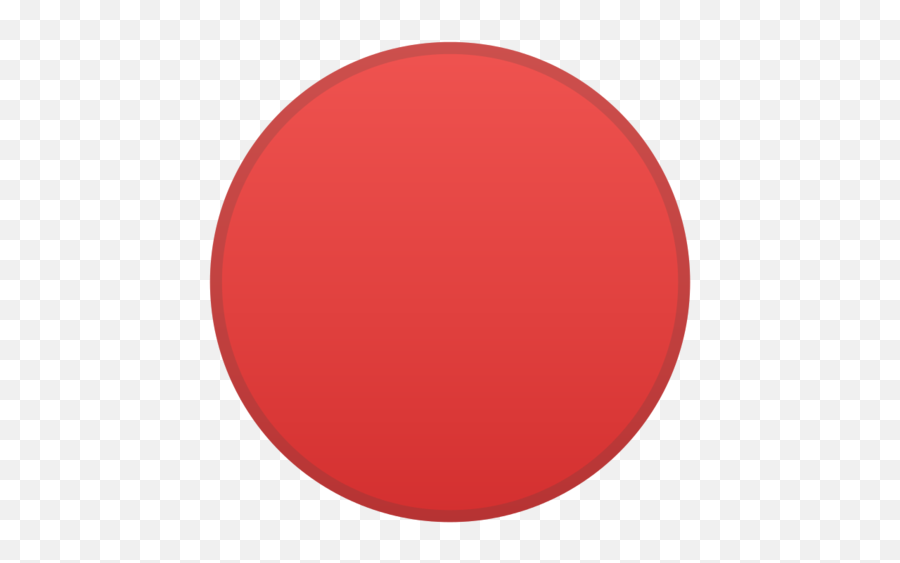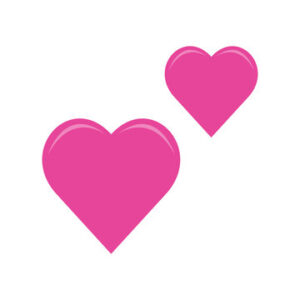Have you ever received a message with a red dot and wondered what it meant? Perhaps you’ve seen the 🔴 symbol used in various contexts, but didn’t quite understand its significance. In this article with Impeccable Nest, we’ll explore the red dot meaning and the 🔴 meaning in text, helping you decode these symbols and use them effectively.

What is the Red Dot Meaning?
The red dot emoji is a versatile symbol that can be used in many different ways. Here are some of the most common meanings associated with this emoji:
Importance
The red dot emoji, 🔴, is a popular symbol in text messaging and social media platforms. It is commonly used to convey different meanings depending on the context or situation. One of its primary uses is to indicate the importance of something.
When someone sends a message containing the red dot emoji, it may be a signal to the recipient that the information contained within the message is critical or urgent. This could be anything from a simple reminder or announcement to a more serious matter like an emergency or a significant decision.
The use of the red dot emoji in this context can be seen as a way of emphasizing the significance of the message or drawing attention to a particular point. In some cases, it may also serve as a warning or alert to the recipient that they need to take immediate action or pay close attention to the message.
It’s worth noting that the meaning of the red dot emoji can vary depending on the sender and the recipient’s relationship and cultural background. Some people may use it more frequently than others, while some cultures may interpret it differently from others. Therefore, it’s essential to consider the context before assuming the exact meaning of the red dot emoji.
In conclusion, the red dot emoji is a versatile symbol that can convey multiple meanings, including the importance of something. When used in this context, it serves as a visual cue to emphasize an urgent or critical message and draw attention to a specific point. However, it’s important to remember that the interpretation of the red dot emoji may differ based on cultural and personal contexts.
Urgency
One such interpretation of the red dot emoji is to convey a sense of urgency. It is often used to indicate that a particular message or conversation is very important and requires immediate attention.
When someone sends a message using the red dot emoji, it is usually an indication that they need to talk about something important. In most cases, this urgency could be related to urgent matters that require immediate action or decisions. For instance, if your boss sends you a message saying “We need to talk 🔴,” it is likely that the conversation will revolve around critical work-related information that needs your immediate attention.
Another situation where the red dot emoji can be used to convey a sense of urgency is in personal communication. If you receive a message from a friend or family member with the red dot emoji, it could mean that they have something important to discuss with you, and they need your attention right away. This might include topics such as emergency situations or personal crises that require your immediate support or action.
Moreover, social media platforms and messaging apps nowadays are designed to communicate with others instantly. This means that users can get messages from anyone at any time, which can sometimes lead to confusion and misinterpretation of the message’s intent. The use of emojis has become popular because they can help to add emotion and context to the message, making it easier for the receiver to understand the intended meaning.
Attention
The red dot emoji is a widely recognized symbol that holds different meanings and connotations depending on its context. One of the most commonly used interpretations of this symbol is to draw attention to something, as it is often associated with notifications or alerts in various applications and platforms.
When someone uses the red dot emoji in a message, it is usually meant to signal that the recipient should pay special attention to the content or subject that is being presented. This can be particularly useful when sharing news articles, videos, or other types of media that the sender believes are important or noteworthy. By adding the red dot emoji at the end of the message, they are effectively emphasizing the significance of the information being shared and encouraging the recipient to engage with it.
However, it is important to note that the use of the red dot emoji to indicate importance or urgency should be used sparingly and only in appropriate situations. Overuse of this symbol may cause it to lose its intended effect and become less meaningful. Additionally, using the red dot emoji excessively could come across as pushy or demanding, causing the recipient to feel overwhelmed or annoyed.
In some cases, the red dot emoji may also be used in a playful or lighthearted manner. For example, if someone sends a message saying “I have a surprise for you! 🔴👀”, they may be trying to build anticipation or create a sense of excitement around the surprise they have planned. Similarly, the red dot emoji can be used to add emphasis or drama to a statement or question, such as “Are you ready for this? 🔴💥”.
Overall, the meaning of the red dot emoji is highly dependent on the individual context in which it is used. However, by understanding its common associations and potential implications, we can communicate more effectively and intentionally in our digital interactions.
Error
In some cases, the red dot emoji can be used to indicate that an error has occurred. This could be in a technical sense, such as an error message that appears on a computer screen or mobile device. In this case, the red dot may symbolize a warning or alert that something has gone wrong.
However, the red dot can also be used more broadly to represent mistakes or errors in general. For example, if someone sends a message saying “Sorry, I made a mistake 🔴,” they may be using the emoji to symbolize an error or mistake that they have made. This could be anything from a simple typo or spelling mistake to a more serious error in judgment or decision-making.
Interestingly, the use of the red dot emoji to represent errors or mistakes is not limited to online communication. In some cultures, red is traditionally associated with danger or warning signs, and the use of a red dot or circle can be used to signify caution or attention. This could include warning labels on hazardous materials or road signs indicating a hazard or danger ahead.
Stop Sign
One of the meanings associated with the red dot emoji is its use as a substitute for a stop sign. This usage can be observed in various online exchanges, where individuals use the emoji to signal a clear and firm warning.
When someone uses the red dot emoji to convey a warning, it often indicates a sense of urgency or importance. The emoji’s circular shape and bright red color naturally draw attention and evoke a sense of caution, much like the function of a stop sign in real life. The symbolic meaning behind the red color also reinforces this message, as red is often associated with danger, warning, and alarm.
For instance, if someone sends a message containing the red dot emoji alongside the statement “🔴 Don’t do that!”, it would indicate that the sender has a strong objection to whatever action the recipient was about to take. The use of the red dot emoji in this context signifies that the situation is serious and should not be taken lightly. The sender may be trying to communicate an important boundary or rule that the recipient must abide by.
In addition to its use as a substitute for a stop sign, the red dot emoji also has other meanings. It can symbolize passion, love, anger, or intensity, depending on the context in which it is used. For example, if someone sends a message expressing their feelings using the red dot emoji, it may suggest that they are deeply passionate or emotionally charged about the subject.
What Does 🔴 Mean in Text?
The 🔴 symbol is a specific type of red dot that has gained popularity in text messaging and social media platforms. Often used in conjunction with other emojis or words, the 🔴 meaning can vary significantly based on the surrounding content. Here are some examples of how the 🔴 symbol is used in text:
1. 🔴 Live
The 🔴 symbol often appears next to the word “live” when someone is streaming a live video or event. This can be found on platforms such as YouTube, Twitch, and Facebook.
2. 🔴 Alert
In some instances, the 🔴 symbol is used as an alert or warning sign in text messages. For example, if someone sends you a message saying “🔴 Emergency!” it would mean that urgent action is required.
3. 🔴 Stop
Similar to a stop sign, the 🔴 symbol can be used to indicate that something needs to come to a halt. This can be used in text messages to signify the end of a conversation or the need for someone to stop doing something.
4. 🔴 Target
As with the red dot itself, the 🔴 symbol can also be used as a targeting symbol in text-based games or applications. For example, a player may use the 🔴 symbol to indicate where they want to shoot or aim.
Understanding the 🔴 meaning in text requires context, as it can vary depending on the situation. However, it is commonly associated with live streaming events, alerts, warnings, stopping something, or targeting symbols in games.
How to Use Red Dot Meaning
Now that you understand the red dot meaning and 🔴 meaning in text, it’s important to know how to use them effectively. Here are some tips for using these symbols in your communications:
- Be Clear: When using the red dot symbol, make sure it is accompanied by clear messaging that accurately reflects its purpose and intent. This will ensure that recipients understand the significance of the symbol and respond appropriately.
- Use Sparingly: Overuse of the red dot symbol can dilute its impact and significance. Only use the symbol when it is necessary and appropriate.
- Consider Your Audience: The red dot meaning and 🔴 meaning in text may not be universally understood by all audiences. Take care to use these symbols only in contexts where they are likely to be recognized and appreciated.
- Be Consistent: If you use the red dot symbol frequently, try to keep its meaning consistent across different platforms and applications. This will help avoid confusion or misunderstandings.
Examples of Red Dot Meaning
Here are some examples of how the red dot meaning can be applied in different settings:
- On a messaging app, a red dot appears next to a new message to alert the recipient that there is something they haven’t read yet.
- In a project management tool, a red dot might indicate an urgent task that needs attention.
- On a dashboard or analytics platform, a red dot could be used to highlight a critical data point or metric.
- In a video game, a red dot could be used as a targeting symbol to aim and fire at enemies.
FAQs
What does a red dot on an email mean?
In many email applications, a red dot appears next to an unread message to signify that there is new content available. This can be helpful for identifying important emails that require attention.
How do I remove the red dot on my iPhone?
The red dot that appears next to an app on an iPhone indicates that there is a notification or update available. To remove the red dot, simply open the app and read any new content or updates.
Can I customize the color of the red dot symbol?
While the red dot is traditionally associated with the color red, it is possible to customize the color of this symbol using certain applications or tools.
Is the 🔴 symbol the same as the red dot?
The 🔴 symbol is a specific type of red dot that has gained popularity in text messaging and social media platforms. While it shares similarities with the traditional red dot symbol, the 🔴 symbol has its own unique meanings and uses.
Why is the red dot used in video games?
The red dot is commonly used as a targeting symbol in video games because of its simplicity and ease of use. It can be easily recognized and understood by players of all skill levels.
Conclusion
The red dot meaning and 🔴 meaning in text are universal symbols that signify importance, alertness, or urgency depending on the context. Understanding when and how to use these symbols effectively can improve communication and enhance the impact of your messaging. Whether you’re using the red dot in an email application or the 🔴 symbol in a text message, remember to be clear, consistent, and mindful of your audience.Ultimately, the red dot and 🔴 symbol are valuable tools in modern communication, helping to convey meaning and urgency in a simple and effective way. By understanding their meanings and uses, you can improve your messaging and better connect with your audience.
So whether you’re looking to draw attention to an important email, indicate urgency in a text message, or target enemies in a video game, the red dot and 🔴 symbol have got you covered.

I am Lois Mullins, an enthusiast in emoji deciphering. Over the recent years, I have continuously updated and delved deep into the knowledge of emoji decryption.
I take pride in my extensive knowledge of decoding emojis, particularly in the Emoji Meanings of Impeccable Nest . I believe that a profound understanding of decoding these symbols can be beneficial for individuals in comprehending the nuances of language when someone sends them an emoji.
By grasping the nuances and potential misinterpretations of these emotional symbols, I am confident that people can use them more effectively to express their emotions and build stronger connections with others. I am committed to sharing my knowledge with the community so that everyone can harness the power of emojis in their everyday communication.
If you are seeking an experienced individual ready to share their passion for emoji deciphering, I hope for the opportunity to collaborate and learn from others. Together, we can create innovative and unique communication experiences!



